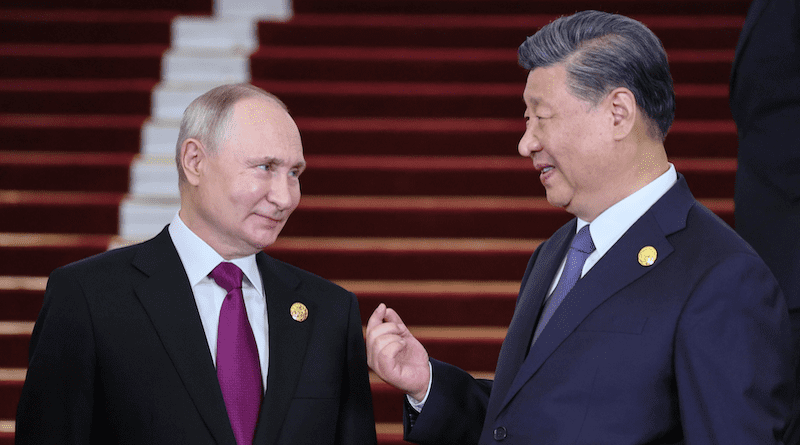Israel-Hamas Conflict In The Shadow Of Corridor Wars – OpEd
While the Middle East geography was witnessing the most brutal scenes of the Israeli-Hamas conflict, the 10th anniversary celebrations of the Belt and Road Initiative (BRI) were held in Beijing last week.
As the United States and most of its allies were fanning the flames of war in the Middle East, there were messages of peace, development, and cooperation in the Chinese capital. US President Biden was playing with the nerves of the people of the region by saying “I am a Zionist” despite a ruthless bombardment and a deepening humanitarian crisis, but on the same day, Chinese President Xi Jinping was talking about global development and cooperation at the Third BRI Forum, promising to support open economies in a world where opposition to globalization is at its peak.
However, in the Forum where more than 130 countries were represented, most of the participants were regimes that were distant from the Western Bloc led by the USA. The guest of honor at the celebrations was Russian President Vladimir Putin, for whom an arrest warrant was issued by the International Criminal Court for war crimes he allegedly committed in Ukraine. Jinping, in his meeting with Putin in the shadow of the Ukraine tension, emphasized the close cooperation and common goals between the two countries, opening a window for the Russian leader to breathe.
While no leader of the European Union member attended the forum, except Hungarian Prime Minister Viktor Orban, Taliban leaders were there. India, which hosted the G20 Summit last September where the leaders of China and Russia did not attend, was not invited to the event.
The photo given in Beijing was actually a clear indicator of the deepening division against the US-led world order. As a two-polar world is re-emerging and rapidly approaching, the sides have become even clearer in Beijing following the last G20 Summit.
The memorandum of understanding signed at the G20 summit in September to build the India-Middle East-Europe Economic Corridor (IMEC) turned into a show of strength by Washington, and the project was considered as an alternative developed by the US-EU-India bloc against the Belt and Road Initiative.
This time, however, there was China’s show of force in Beijing.
Within the framework of the BRI initiative, which was launched by Jinping in 2013 and designed to weave trade networks that will connect Asia, Europe, Africa, and Latin America, more than 150 countries and over 30 international organizations have signed cooperation agreements to date. However, the initiative has also been accused of putting developing countries under unsustainable debt and supporting the development of energy and infrastructure projects that damage the environment. Therefore, Jinping’s priority at the Forum was to try to improve the image of the initiative. For this reason, in his opening speech, he had to use the word “green” 11 times while announcing finance packages with plenty of zeros.
It can be said that IMEC has begun to crack after the developments in the Middle East, and the BRI initiative has taken a step further. However, we will probably be able to see the situation more clearly after the IMEC meeting planned to be held next November.
Global competition between major powers has increasingly focused on trade routes in recent years. At a time when the roads have become vital for the parties, it is now very difficult to say that the corridor competition – which also means energy wars – does not have an impact on the powder kegs exploding in the Middle East.

